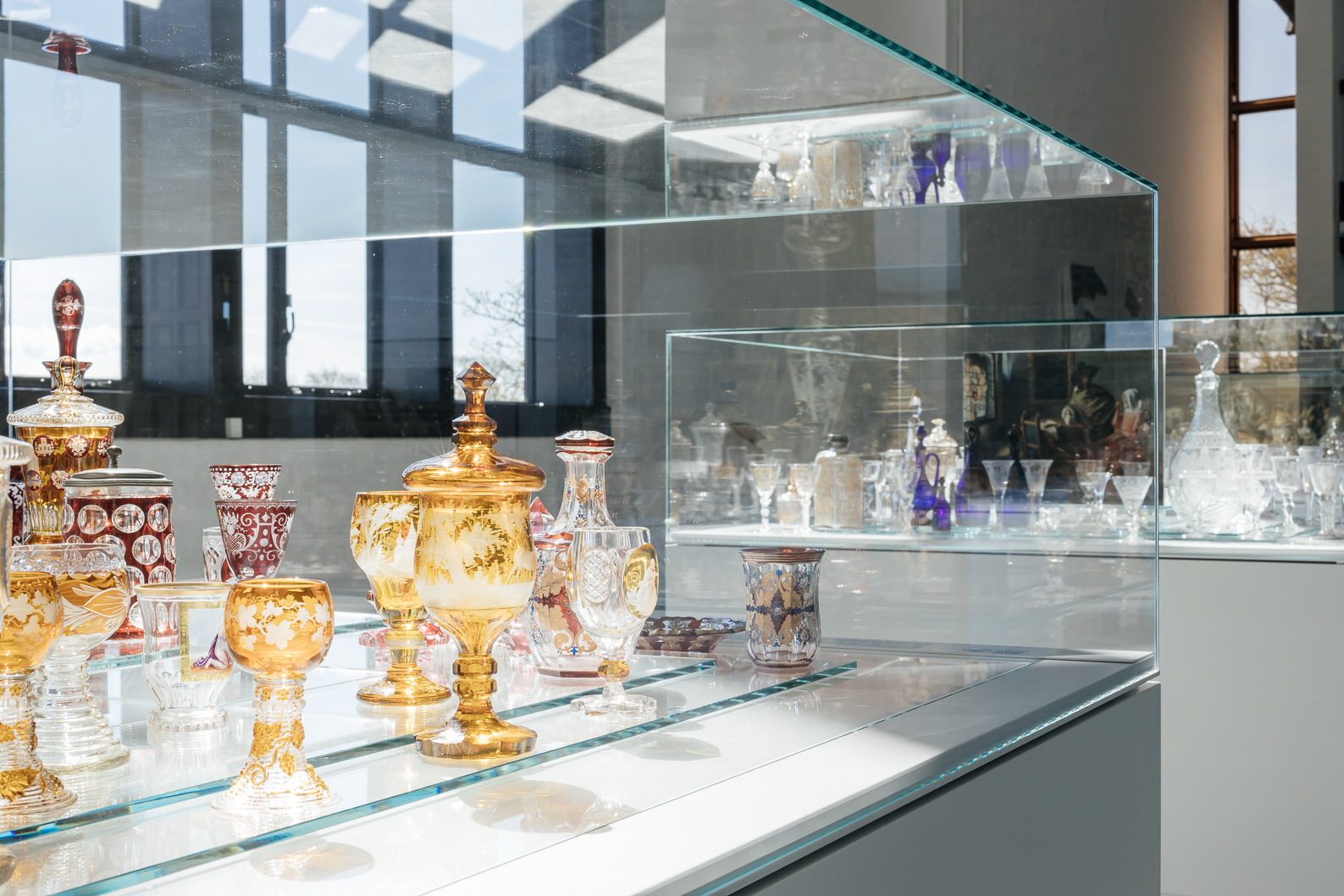The Museums Collections

The Nordic Region’s Largest Collection of Decorative Glass and Goblets
J.C. Hempel’s passion for antique glass lies at the heart of his personal collection, which he built primarily between 1950 and 1970.
The collection includes more than 1,000 glass objects, one-third of which originate from ancient cultures—particularly from Rome, where transparent glass was first invented.
Glassblowing as a technique emerged in the Middle East in the first century BCE, and remarkably, it has remained largely unchanged for nearly 2,000 years.
After the fall of the Roman Empire, glass production declined in Europe but continued in the Near East. From there, it spread back to Europe via Venice and was later revived in the Rhineland, the Netherlands, and eventually the rest of the continent.
This entire journey of glass through history and geography is told through the pieces in Hempel’s glass collection, which is on permanent display at Hempel Glass Museum.
The core of the collection dates from the 18th and 19th centuries. It is highly diverse and represents glass production across multiple countries and stylistic periods.
Visitors will find exquisite glassworks from Venice, Bohemia, Silesia, Austria, Germany, England, France, Spain, Russia, the Netherlands, Belgium, Sweden, Norway—and a few from Denmark.
The exhibition presents a cultural-historical perspective, offering insight into glass’s journey through time and across civilizations.
Peter F. Heering’s Collection
The collection includes 19th-century glass from early Danish glassworks, including Conradsminde, Aalborg, Funen, and Holmegaard.
The collection is on loan to Hempel Glass Museum and is part of the permanent exhibition.
Modern Collection
Part of the museum is dedicated to a growing collection of contemporary Danish glass art, showcasing some of Denmark’s finest glass artists from 1988 to the present.
The collection offers a remarkable insight into the evolution of Danish glass art—from primarily functional design to today’s unique art pieces, where glass is used as a medium in artistic expression.
In 1988, the foundation behind Hempel Glass Museum established an annual glass award, given to a Danish glass artist each year.
The award includes a solo exhibition at the museum, and the museum acquires a work by the artist for its permanent collection.
Viggo Jarl
Thanks to the friendship between J.C. Hempel and Viggo Jarl (1879–1965), Hempel Glass Museum owns the largest collection of this artist’s works, including the figures displayed outdoors as well as an extensive collection of portrait busts and ceramic sculptures.
“Hourglass” by Lilibeth Cuenca Rasmussen
With generous support from the Ny Carlsberg Foundation and the Lemvigh-Müller Foundation, the museum acquired an over 2-meter-tall hourglass created by Lilibeth Cuenca Rasmussen. The artwork, weighing 40 kg and made from mouth-blown colored glass, copper, stainless steel, Styrofoam, and colored glass, will become part of the museum’s new entrance.
The piece, Hourglass, symbolizes transience, but in the hands of Lilibeth Cuenca Rasmussen, it transforms into a life-affirming cyclical concept—a reminder that every ending is also a beginning.
This beautifully underscores Hempel Glass Museum’s foundation as a modern cultural institution that looks both forward and back into European glass history.
Lilibeth Cuenca Rasmussen (b. 1970) is an internationally acclaimed performance and visual artist. Throughout her career, she has developed a distinct interdisciplinary style, where text, music, costumes, and precise stage design play central roles.

